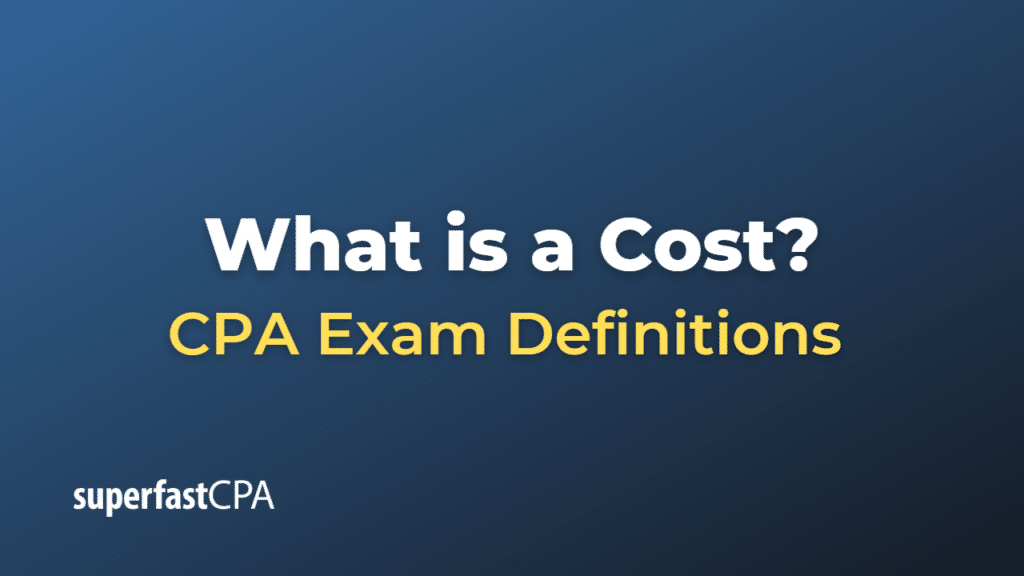Cost
A cost is an expenditure or resource that a business or individual incurs to produce goods, provide services, or achieve a specific objective. Costs are essential components of financial reporting and decision-making, as they influence profitability, pricing strategies, budgeting, and resource allocation.
Costs can be classified in various ways, including:
- Direct vs. indirect costs:
- Direct costs are expenses that can be directly traced to a specific product, service, or activity. Examples include raw materials, direct labor, and manufacturing supplies.
- Indirect costs, also known as overhead costs, are expenses that cannot be directly tied to a single product or service, as they are incurred to support overall business operations. Examples include rent, utilities, insurance, and administrative salaries.
- Fixed vs. variable costs:
- Fixed costs are expenses that remain relatively constant, regardless of the level of production or business activity. Examples include rent, depreciation, insurance, and salaries of permanent employees.
- Variable costs are expenses that fluctuate in proportion to the level of production or business activity. Examples include raw materials, direct labor, and shipping costs.
- Operating vs. non-operating costs:
- Operating costs are expenses associated with the day-to-day operations of a business, such as wages, rent, and utilities. These costs are essential for running the business and generating revenue.
- Non-operating costs are expenses that are not directly related to the core business operations, such as interest expenses, gains or losses from investments, and one-time charges related to restructuring or asset impairment.
- Actual vs. opportunity costs:
- Actual costs are the tangible expenses incurred to produce goods or services, such as the cost of raw materials, labor, and equipment.
- Opportunity costs represent the value of the next best alternative that is forgone when making a decision. For example, if a business owner decides to invest in new machinery instead of expanding their marketing efforts, the opportunity cost would be the potential revenue generated from the marketing campaign that was not pursued.
Understanding and analyzing costs is crucial for businesses to make informed decisions, manage resources effectively, and maintain profitability. Cost accounting, a specialized branch of accounting, focuses on identifying, measuring, and analyzing costs to support management decision-making, budgeting, and cost control.
Example of Cost
Let’s consider an example of a small manufacturing company called “ABC Widgets” that produces widgets for sale. The company incurs various costs to produce and sell these widgets. Here’s a breakdown of some key costs and their classifications:
- Raw materials: The cost of the metals and plastics used to create the widgets. This is a direct cost because it can be directly traced to the production of the widgets.
- Direct labor: The wages paid to the employees who work on the assembly line to produce the widgets. This is a direct cost as it is directly associated with the production process.
- Indirect Costs:
- Rent: The cost of renting the factory where the widgets are produced. This is an indirect cost because it is necessary to support overall business operations but cannot be traced to a specific widget.
- Utilities: The cost of electricity, water, and gas used in the factory. These are indirect costs because they support the overall operations but cannot be allocated to a specific widget.
- Depreciation: The reduction in the value of the machinery and equipment used to produce the widgets over time. This is a fixed cost because it remains relatively constant, regardless of the level of production.
- Salaries of administrative staff: The wages paid to office employees who handle tasks like accounting, human resources, and management. These are fixed costs, as they do not change based on production levels.
- Direct labor: The wages paid to assembly line employees are variable costs because they change depending on the number of widgets produced. More production would require more labor hours, resulting in higher labor costs.
- Shipping costs: The cost of transporting the finished widgets to customers. This is a variable cost because it depends on the number of widgets sold.
By understanding and categorizing these costs, ABC Widgets can make informed decisions about pricing, budgeting, and resource allocation to maximize profitability and efficiency. For example, the company might analyze its variable costs to determine whether it could reduce production costs by finding a cheaper supplier for raw materials or improving efficiency in the assembly process. Similarly, ABC Widgets could evaluate its fixed costs to identify potential savings, such as negotiating a lower rent for the factory or reducing administrative expenses.













